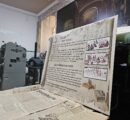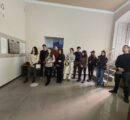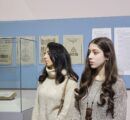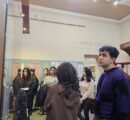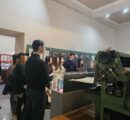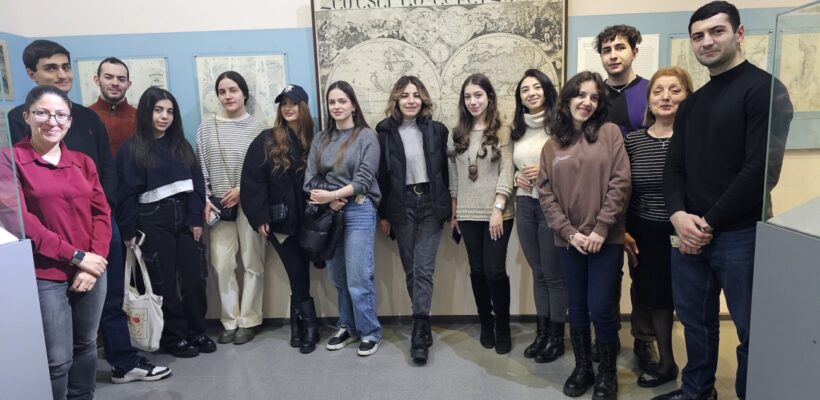
AUA Students Visit Museum of Printing
3 min readYEREVAN, Armenia — On February 3, students in the American University of Armenia’s (AUA) Armenian History course visited the Museum of Printing at the National Library of Armenia.
Students first learned about the tradition of Armenian printing during their course, taught by College of Humanities and Social Sciences Assistant Professor Dr. Naira Sahakyan. Students discussed the socio-political and cultural environments of the early modern period during which the first Armenian printing books appeared. To deepen their knowledge and engage in a firsthand experience of Armenian printing history, students visited the Museum of Printing, which opened its doors at the National Library of Armenia in 2017, showcasing exhibits of Armenia’s rich written culture in six halls.
The AUA students started their visit in the halls “The Origin of Writing” and “Armenian Alphabet,” before moving to the “The Firstborn of Armenian Printing” hall, where they encountered the first printed books in the Armenian language: Urbatagirk (Venice, 1512); the first Armenian printed Bible, the Voskanyan Bible (Amsterdam, 1666-68); the first Armenian printed map, All-Pervading World (Amsterdam, 1695); and the first Armenian periodical, Azdarar (Madras, 1794-96).
In the “Diaspora of Armenian Printing” hall, students familiarized themselves with the main centers where Armenian printing houses functioned and books were published in the Armenian language. To gain an understanding of how the printing process was organized, students observed printing machines, cliches, and paintings of Armenian printing houses operating in different countries.
After the visit, the students took time to reflect on their impressions from the tour.
Liana Aramyan (BAEC ’25) noted, “During my visit to the museum, it was very interesting to see how many printing centers had been opened and were working outside of Armenia. I knew about Italy and Constantinople, but Great Britain and Germany were interesting revelations for me. The best part of our visit was the fact that we were allowed to touch the metal letters used to create the text for printing, and, of course, the wooden chair-stairs.”
“Going to museums helps to strengthen your knowledge. During classroom discussions, we get a chance to learn a lot,” shared Silvi Gevorgyan (BAEC ’25). “However, I do not feel a strong connection; the history we learn seems too far in the past and not connected to our present reality. When you go to the museum, see the books your instructor was talking about, and have an opportunity to ‘touch the past,’ you realize that you are also part of history, and this journey of time never stops. Stepping into the printing museum felt like a voyage through time; witnessing the transition from handcrafted manuscripts to the Gutenberg press and beyond was not just a stroll through history, but an immersive experience that deepened my understanding of the pivotal role printing has played in shaping societies.”
Yeva Hovhannisyan (BAB ’25) added: “I thoroughly enjoyed my visit to the Book Printing Museum as it deepened my appreciation for the unique blend of Armenian history and craftsmanship. The museum’s rich narrative incorporated the evolution of printing techniques, showcasing ancient manuscripts and the revolutionary printing process. Witnessing the process of manual typesetting and the mechanical symphony of printing machines provided an exciting insight into the artistry and dedication of past craftsmen. The exhibit that left a significant impression on me was the one with the ‘youngest age’ among the displays in the museum, created by Ararat Sargsyan. This parchment, featuring the Armenian alphabet, traveled to space and, after spending three weeks there, returned to Earth. It is now proudly presented in the Museum.”
Founded in 1991, the American University of Armenia (AUA) is a private, independent university located in Yerevan, Armenia, affiliated with the University of California, and accredited by the WASC Senior College and University Commission in the United States. AUA provides local and international students with Western-style education through top-quality undergraduate and graduate degree and certificate programs, promotes research and innovation, encourages civic engagement and community service, and fosters democratic values.

